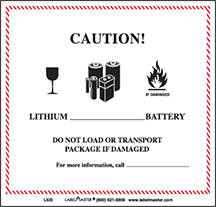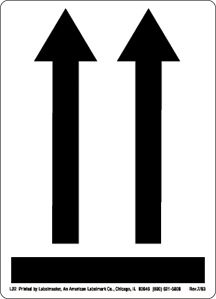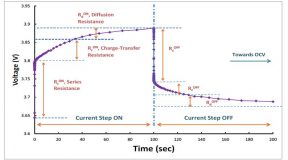Paul Burgess, DGSA, CDGP
Labelmaster
Given the sensational media coverage last year of the problems affecting the Boeing 787 aircraft’s introduction into service, and the variety of transport incidents over the last decade that appear to be at least potentially related to batteries of one sort or another, it should come as no surprise to anyone that the proper and safe classification, packaging, marking and labeling of these important commodities has assumed greater prominence in the transport industry.
When shipping batteries or any hazardous material/dangerous goods, it is important to take the appropriate steps to properly and accurately classify the product prior to transport. Classification should take the mode of transport into consideration; classification criteria among the three common modes (ground, air freight and maritime) may differ somewhat depending on the product, and classification should be based on the regulations governing the transport mode selected. In the US, most classification for transport operations is performed according to the criteria contained in the 49 CFR Hazardous Materials Transport Regulations, Part 173. Shippers should also consult the relevant modal regulation if classification is required. If the battery has been provided with a Material Safety Data Sheet or Safety Data Sheet (MSDS/SDS), see Section 14 “Transportation” or Section 16 “Other Regulatory Information.” These sections may contain this information already, and obviate the need for self-classification. This information may also be present on a technical specification sheet, or directly from the manufacturer of the battery.
 Batteries, if classified as a hazard at all (many small and/or permanently sealed batteries fall into exempt categories), will fall into one of two differing hazard classification categories. Many batteries will be assigned to the Hazard Class 8, Corrosives, category; these include lead acid batteries, wet batteries filled with acid or alkaline, non-spillable wet batteries, etc. Lithium Ion and Lithium Metal batteries, as well as Nickel Metal Hydride batteries (when transported by sea), fall into the Hazard Class 9, Miscellaneous Hazard, category. Shippers should consult the Hazardous Materials Table (HMT) or Dangerous Goods List (DGL) in the relevant modal regulations to determine the UN Identification number associated with the battery type that they intend to transport. The UN ID# is a four digit number preceded by the letters “UN” and this number serves as a worldwide and intermodal common-use identifier of the material or product.
Batteries, if classified as a hazard at all (many small and/or permanently sealed batteries fall into exempt categories), will fall into one of two differing hazard classification categories. Many batteries will be assigned to the Hazard Class 8, Corrosives, category; these include lead acid batteries, wet batteries filled with acid or alkaline, non-spillable wet batteries, etc. Lithium Ion and Lithium Metal batteries, as well as Nickel Metal Hydride batteries (when transported by sea), fall into the Hazard Class 9, Miscellaneous Hazard, category. Shippers should consult the Hazardous Materials Table (HMT) or Dangerous Goods List (DGL) in the relevant modal regulations to determine the UN Identification number associated with the battery type that they intend to transport. The UN ID# is a four digit number preceded by the letters “UN” and this number serves as a worldwide and intermodal common-use identifier of the material or product.
 Once the classification is known, the battery can be packaged appropriately and that package will be ready to have any required labels and markings applied. These may differ significantly among modes of transport, and depending on the type of battery that is being shipped. It is imperative that the shipper consult the guiding regulations to determine the correct labels and markings to apply. However, one may expect that the appropriate hazard label will be required, as well as orientation arrows indicating the top of the package when any liquid (i.e wet battery) is involved. Lithium batteries, especially when shipped by air, have stringent marking requirements; a “Lithium Battery Handling Label” stating the type of lithium battery being transported and providing an emergency telephone number for assistance in case the package or its contents are damaged in transit, must also be applied for air shipment under the International Civil Aviation Organization (ICAO) regulations, which do govern most air transport operations. Under all modes, the package will also require marking with the correct UN ID number of the product being shipped—the size of this marking is dependent on the mass of the package and the mode of transport selected, so shippers should be aware of that and plan accordingly.
Once the classification is known, the battery can be packaged appropriately and that package will be ready to have any required labels and markings applied. These may differ significantly among modes of transport, and depending on the type of battery that is being shipped. It is imperative that the shipper consult the guiding regulations to determine the correct labels and markings to apply. However, one may expect that the appropriate hazard label will be required, as well as orientation arrows indicating the top of the package when any liquid (i.e wet battery) is involved. Lithium batteries, especially when shipped by air, have stringent marking requirements; a “Lithium Battery Handling Label” stating the type of lithium battery being transported and providing an emergency telephone number for assistance in case the package or its contents are damaged in transit, must also be applied for air shipment under the International Civil Aviation Organization (ICAO) regulations, which do govern most air transport operations. Under all modes, the package will also require marking with the correct UN ID number of the product being shipped—the size of this marking is dependent on the mass of the package and the mode of transport selected, so shippers should be aware of that and plan accordingly.
 Depending on mode, the correct Proper Shipping Name as assigned in the corresponding HMT/DGL may need to be marked on the package as well. Other safety, cautionary, or handling markings might be required depending on the mode, or in some cases the carrier, selected. Shippers should be guided by the modal regulations under which they intend to transport the product and might consider contacting the hazardous materials/dangerous goods department of the carrier they intend to use for any carrier specific guidance prior to offering their package for transportation in commerce.
Depending on mode, the correct Proper Shipping Name as assigned in the corresponding HMT/DGL may need to be marked on the package as well. Other safety, cautionary, or handling markings might be required depending on the mode, or in some cases the carrier, selected. Shippers should be guided by the modal regulations under which they intend to transport the product and might consider contacting the hazardous materials/dangerous goods department of the carrier they intend to use for any carrier specific guidance prior to offering their package for transportation in commerce.
Labelmaster established in 1967, is a developer, manufacturer, distributor and marketer of hazardous materials compliance products, including battery labels, regulatory publications, battery packaging and more. The company’s 47 years of experience providing regulatory information and products for all transportation modes make it especially qualified as a total compliance resource.
To learn more about Labelmaster, find us on Facebook or follow us on Twitter.
Paul Burgess is a Staff Regulatory Specialist at Labelmaster and the company’s expert on OSHA’s Hazard Communication Standard. Paul’s training includes degrees from the University of Washington and Governors State University, professional certification as a Dangerous Goods Safety Advisor (DGSA), an EPA Hazardous Waste Operations and Emergency Response (HAZWOPER) Specialist and training in the federal Transportation Worker Identification Credential (TWIC) program. Paul has more than 30 years of experience in the hazard communication, dangerous goods, and environmental, health and safety sectors, including the US Navy and the trucking, heavy manufacturing and railroad industries.










